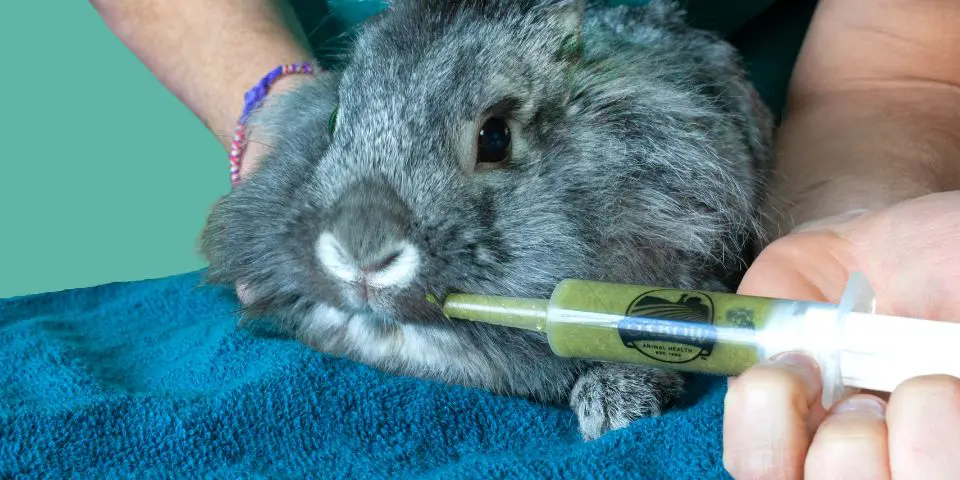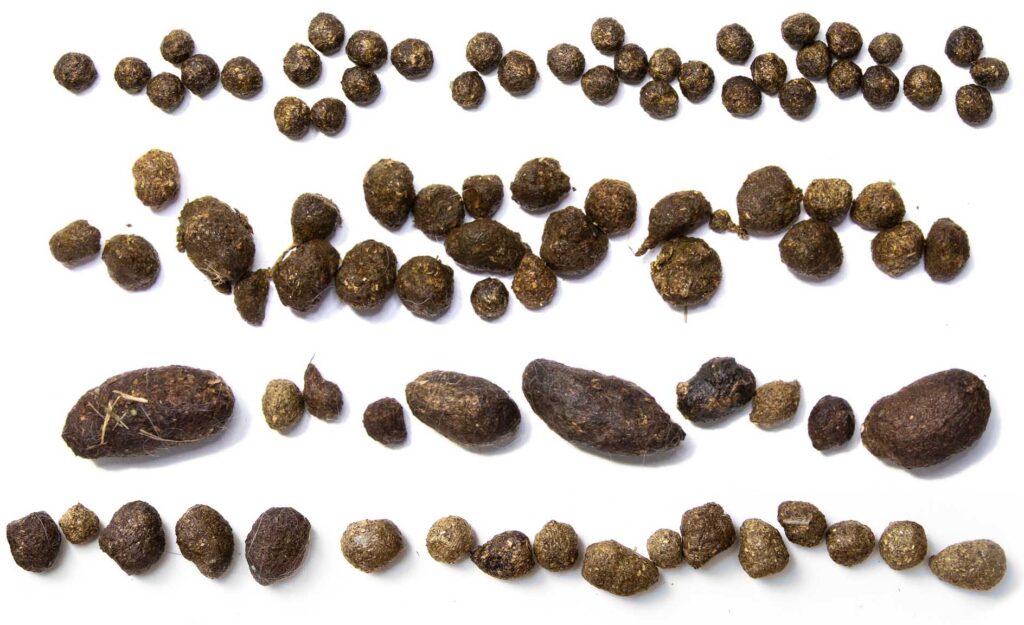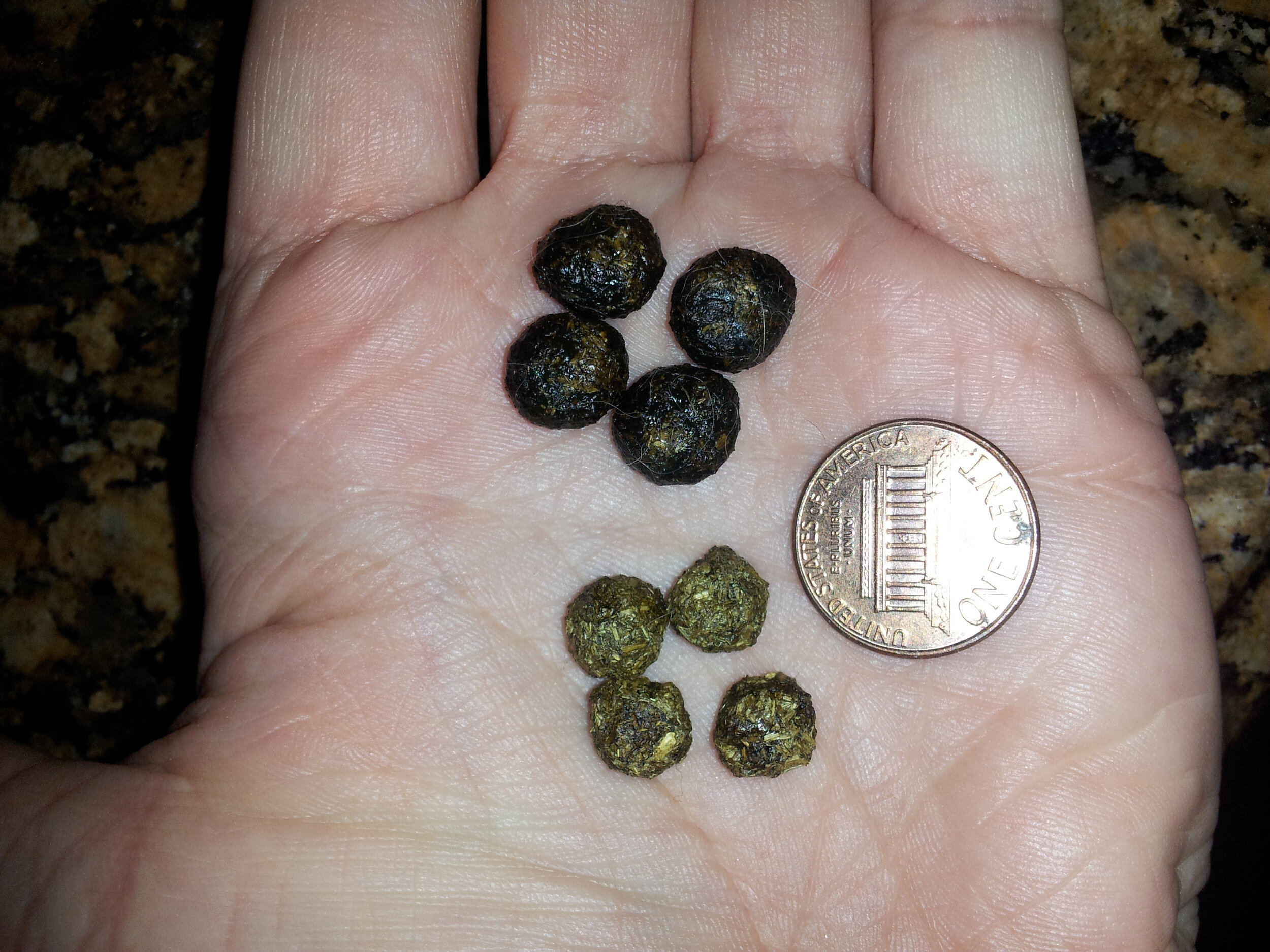GI stasis is a complete stop of the gastrointestinal movements. It may occur due to many issues that can be found both within and outside the GI tract.
It is not uncommon for this to happen at least once in the rabbits lifetime but as a common occurrence it may indicate bigger issues with your rabbit’s health.
GI stasis is not a disease, but a symptom of an illness or harm. It can emerge as a stress response, pain response, due to a GI issue like impaction (blockage) or bloating, it can surge because a difficulty eating or due to bad eating habits, etc…
There are hundreds of ways a rabbit can develop GI stasis, with varying survival rates.
GI stasis is one of the parent symptoms in my general sickness symptoms list, showing as lack of appetite and especially stopped stool production.
As the stool stops production, you may be able to see the size of poop decrease.
Regardless of the cause it is always a good idea to obtain veterinary help as soon as possible, as the cause may be unknown and it could kill your pet very rapidly.
If a vet is not available there are though some relief methods that can be administered, but most have to be administered only if the cause of the issue is mostly known.
This is because some of these techniques may aggravate the issue further and kill your pet.
This is most notable with impaction.
REFRAIN FROM USING THIS AS A GUIDE TO TREAT YOUR RABBIT.
IT IS ALWAYS BETTER TO TAKE THEM TO THE VET.
Rabbit carers sometimes provide rabbits with GI stasis with low-grammage simethicone (baby-grade) to reduce the amount of gas built up in the guts.
This may be helpful in most situations except with impaction. This is because when rabbits lack food in their intestines dysbiosis occurs.
Dysbiosis are the change in numbers of bacteria, changes in bacterial metabolic functions, or changes in bacterial distribution.
In the case of rabbits, this dysbiosis causes one or some of the many bacteria in their guts to generate gases that build up in the GI tract and stomach.
Another tip rabbit owners give is always having Metacam/Meloxicam that has been prescribed by a vet. Meloxicam is a pain reliever and will help in most situations.
Be still mindful when administering this to a rabbit that may be impacted.
Vets and rabbit owners will also recommend buying Critical Care or an alternative that allows for syringe feeding the rabbit once there is a clear cause of why the GI stasis has occurred. Forcefully feeding the rabbit can be an arduous task, but it can quickly solve certain issues.
Products like these also provide other things like minerals and vitamins that the rabbits may need in case of disease.
There are massage techniques that can alleviate the symptoms regardless of cause. These are based on doing circular or linear motions from the rabbit’s stomach to the butt.
Any of these will help alleviate the GI stasis but they ultimately cannot address the underlying issue.
If you are interested in GI stasis, its causes, or how to alleviate it or the issues that may develop it you can see:
The Educated Rabbit’s guide on GI stasis in rabbits.
The Rabbit Welfare Association and Fund’s information sheet about gut slowdown.
The Rabbit Welfare Association and Fund’s information about Meloxicam.
Total Pet Training’s video on a GI stasis massage.
Zooh Corner’s guide on GI stasis including information about simethicone.
If you are interested in dysbiosis, you can find more information here:
The National Library of Medicine’s manuscript about dysbiosis.
Kelly M.’s abstract about the microbiota of rabbit GI tracts.














